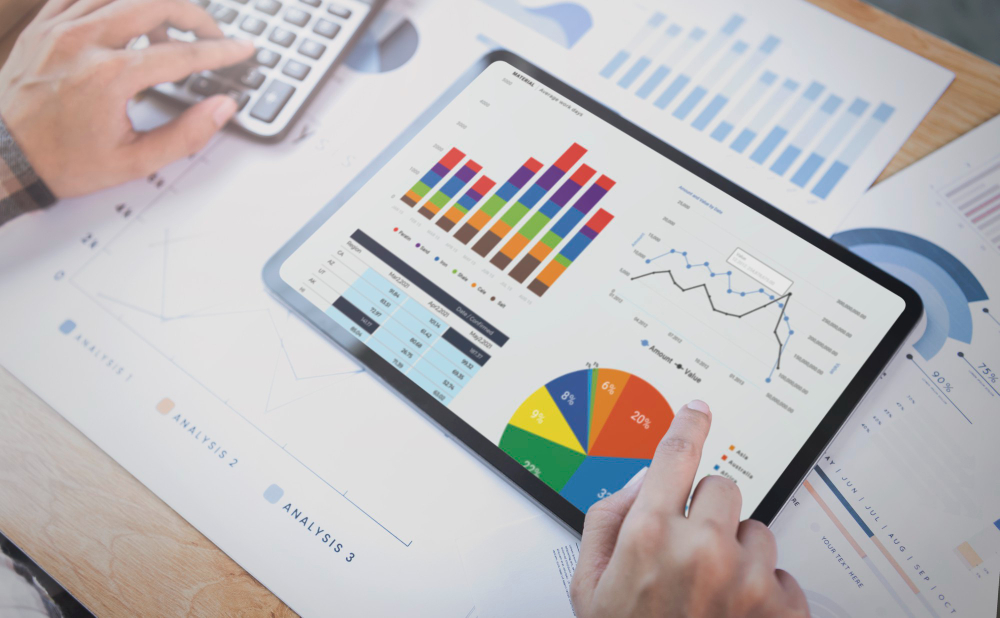In today’s digital era, cybersecurity is a pressing concern for any business. As you navigate the complex digital landscape, you face an increasing number of potential threats and vulnerabilities. Here, risk analytics comes into the picture as a powerful tool in your cybersecurity arsenal. Let’s explore what risk analytics solutions are and how they can enhance your cybersecurity.
What is Risk Analytics?
Risk analytics, often known as risk-based analytics, is a type of analysis that allows companies to monitor, quantify, and predict risk in their operations. Examining data using various statistical approaches and models delivers valuable insights into potential hazards and vulnerabilities in company systems, processes, and data. Given that a recent report forecasts cybercrime costs escalating to $10.5 trillion by 2025, this underscores the critical importance of comprehensive risk assessment in cybersecurity.
Risk analytics gives you a clear understanding of your potential threats, enabling you to take proactive steps to mitigate them. It entails analyzing historical data to identify patterns and trends that could indicate future risks. It also enables you to assess the potential impact of these risks on your company’s operations and financial performance.
How Can Risk Analytics Be Used?
Risk analytics can be used in various ways to enhance cybersecurity. Some of the key applications include Data Activity Monitoring, Data Risk Management, Ecosystem Integrations, Automated Workflows and Playbooks, and Sensitive Data Management.
Risk analytics can help you keep track of data activity throughout your company’s systems and networks. It can detect anomalies or unexpected behaviors that may signal a cybersecurity issue by analyzing data traffic and consumption trends. For example, if an unusually large volume of data is transferred from a specific server or user account, it could indicate a data breach or another cybersecurity concern.
Risk analytics is also an important component of data risk management. It lets you identify the potential hazards to your data and take suitable precautions to mitigate them. For example, suppose your company handles sensitive client data. In this case, risk analytics can assist you in understanding the possible dangers of data theft or loss, and implement suitable data protection measures.
Ecosystem integration with other systems and tools in your business network can enhance cybersecurity through risk analytics. Risk analytics may improve your company’s overall security posture by connecting with your firewall, intrusion detection system, and other security tools, resulting in a holistic view of your organization’s cybersecurity defense.
Another application of risk analytics is to automate cybersecurity workflows and playbooks, which allows for automated alerts when predetermined risk thresholds are met. Should a potential cybersecurity threat be detected, the system can automatically trigger an alert to the appropriate team or commence a predefined response protocol.
Risk analytics can help you manage sensitive data more effectively. It can assist in identifying and classifying sensitive data, understanding its potential risks, and implementing appropriate data protection measures. With this, they can assess the likelihood of a data breach or unauthorized access and implement protective measures, like access control, encryption, and security audits, to mitigate the identified risks and safeguard sensitive information effectively.
Implementing Risk Analytics in Your Business
Now that you understand risk analytics and its uses let’s delve into how to implement it in your business. One of the first steps is to find a risk analytics platform that can collect, analyze, and help make decisions based on the right data.
A risk analytics platform is a software solution that provides the tools and capabilities needed to implement risk analytics in your business. It can collect data from various sources, analyze it using statistical models, and present the analysis in a format that is easy to understand and act upon.
The platform should be able to handle enormous amounts of data, as the efficiency of risk analytics is heavily reliant on the quantity and quality of data it can analyze. It should also handle a variety of data formats and types, as the data you need to analyze may come from multiple sources and forms.
Once you have a risk analytics platform, you’ll need to define the risk indicators you want to monitor. These could range from unusual data traffic to certain types of cyber threats. The risk indicators should be consistent with your company’s objectives and risk tolerance levels.
To implement risk analytics into your business, follow these tips:
- Platform Selection: Choose a strong risk analytics platform tailored to your company’s unique requirements. The platform should provide advanced data analytics and be able to process and analyze large volumes of information efficiently.
- Define Your Risk Indicators: Determine the specific risk indicators vital for monitoring the security and performance of your business operations. These indicators will focus your analytics efforts and ensure you track the most critical data points relevant to your industry and company.
- System Integration: Incorporate the risk analytics platform with your existing infrastructure and tools. This helps you create a cohesive risk management system to pull data from various sources and provide a holistic risk assessment.
- Process Implementation: Establish a procedure to update and enhance risk indicators to align with new business developments and emerging threats. By regularly refining your risk analytics, you can proactively identify and mitigate potential risks.
- Team Training: Conduct training sessions for your team on how to effectively use the risk analytics platform and accurately interpret the results. Equipping your team with the necessary skills can empower them to leverage the analytics for strategic decision-making and risk mitigation.
In the ever-evolving digital world, the future of cybersecurity is inextricably linked to risk analytics. With cyber threats becoming increasingly sophisticated and data volumes rising, risk analytics have become crucial for effective cybersecurity. This technology helps businesses pinpoint and mitigate cyber threats, offering a clear understanding of their risk landscape to inform strategic decisions and build strong cybersecurity defenses. By providing real-time insights and predictive analysis, risk analytics allows organizations to stay one step ahead of potential cyber-attacks.
































































